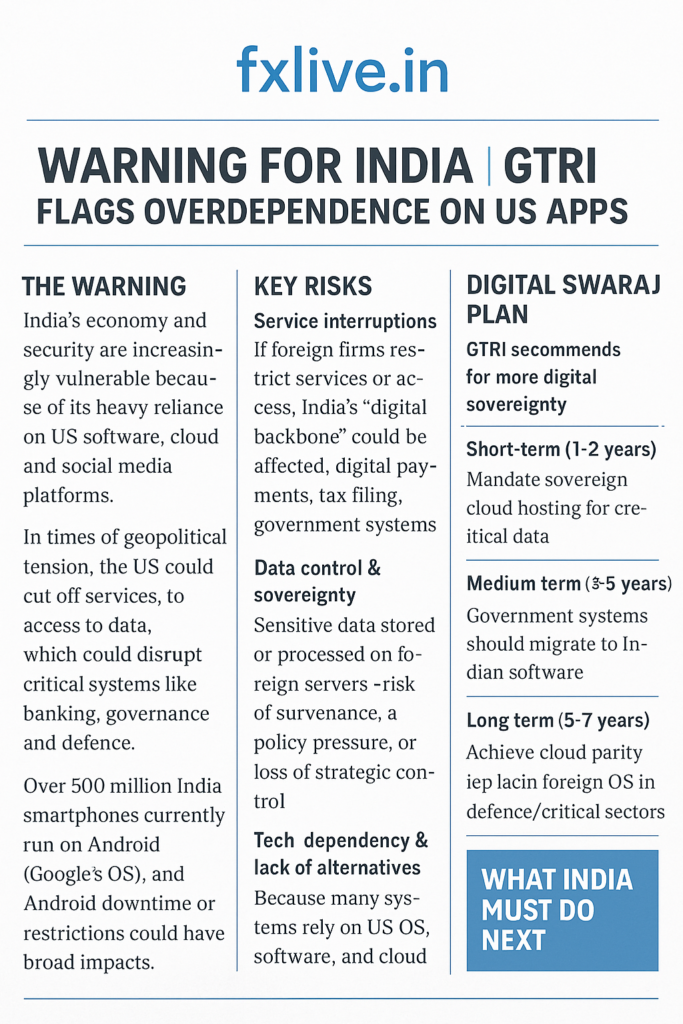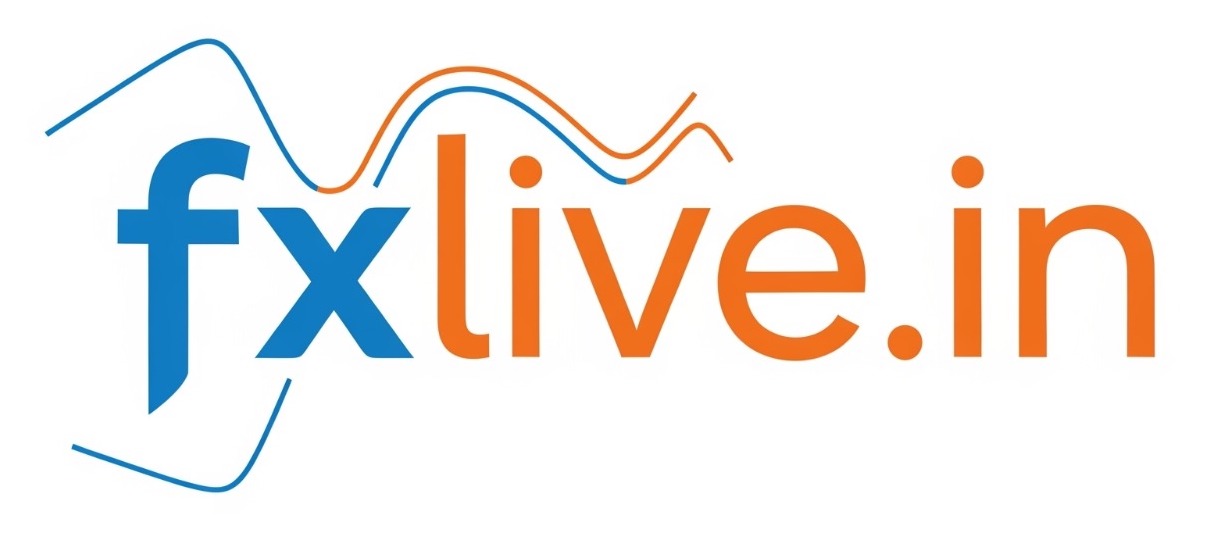Jai Siya Ram
What GTRI Is Warning About
- GTRI says India’s economy and security are increasingly vulnerable because of its heavy reliance on US software, cloud services, and social media platforms.
- The concern is that in times of geopolitical tension, the US could cut off services / access to data, which could disrupt critical systems like banking, governance, defence.
- Specific risk: over 500 million Indian smartphones currently run on Android (Google’s OS) — so Android downtime or restrictions could have very broad impacts.
What GTRI Recommends
GTRI proposes a plan called “Digital Swaraj Mission”, aiming for more digital sovereignty. Key components:
| Timeframe | What Should Be Done |
|---|---|
| Short term (1-2 years) | Mandate sovereign cloud hosting for critical data; launch a national operating system program; pilot Linux / open source transitions in key ministries. |
| Medium term (3-5 years) | Government systems should migrate to Indian software; public-private cybersecurity consortia should be fully operational. |
| Long term (5-7 years) | Achieve cloud parity (i.e. Indian cloud infrastructure equivalent in capability + security); replace foreign OS in defence / critical sectors; build globally competitive, open-network platforms. |
✅ Implications & Outlook
- If implemented well, the strategy could strengthen India’s digital sovereignty and reduce exposure to external tech risks.
- But challenges include: ensuring enough investment, building capacity (skilled workforce, infrastructure), possibly dealing with transitional friction (e.g., compatibility, scale).
- Also, trade / tech diplomacy with the US (and other countries) will matter. India might negotiate terms / safeguards in trade agreements.
- The risk is not hypothetical — given global shifts toward tech wars, sanctions, and supply-chain / data sovereignty norms (Europe’s Digital Markets Act, etc.), the pressure is rising.



